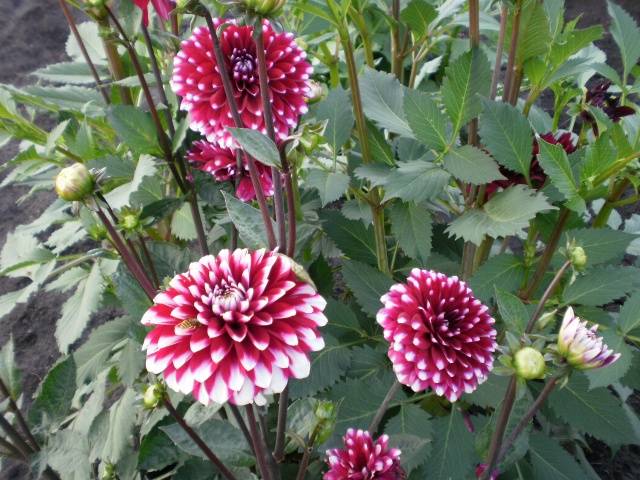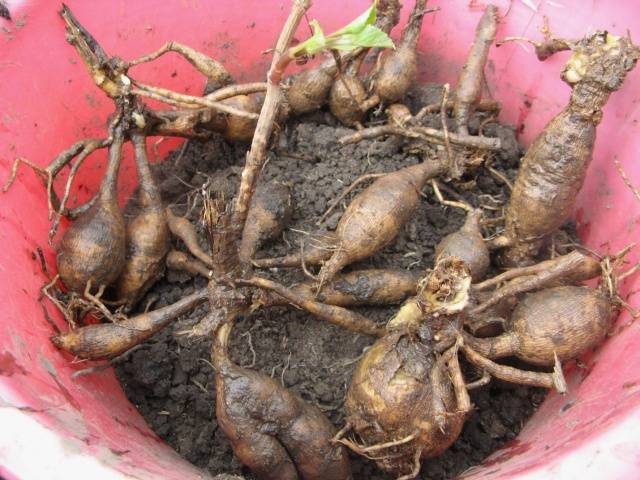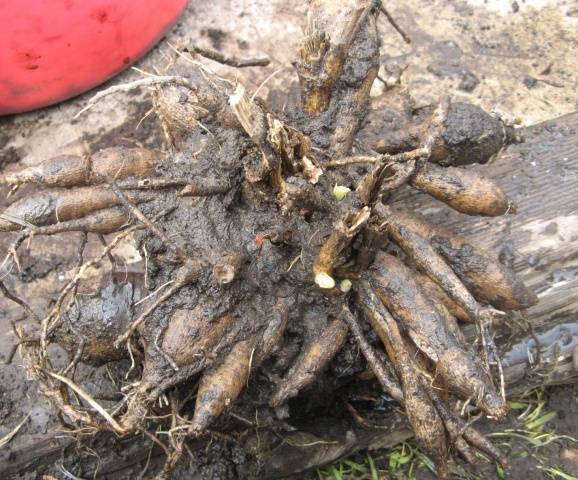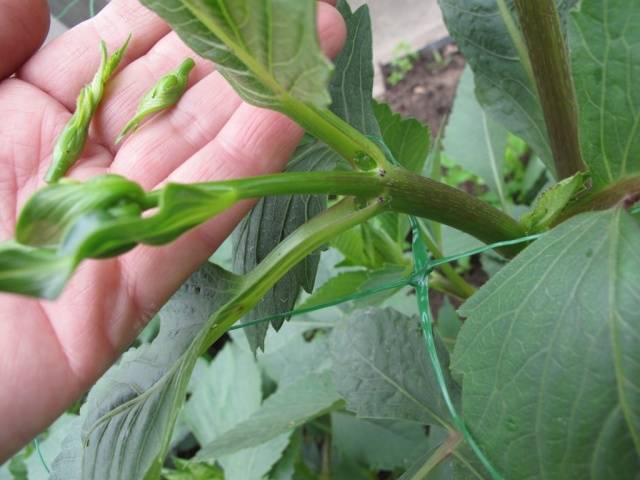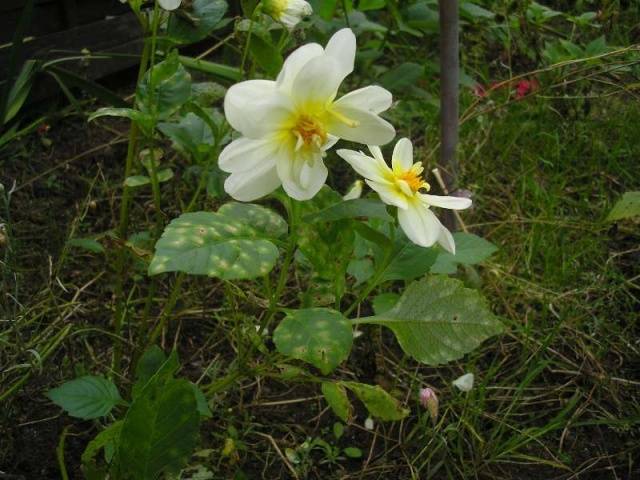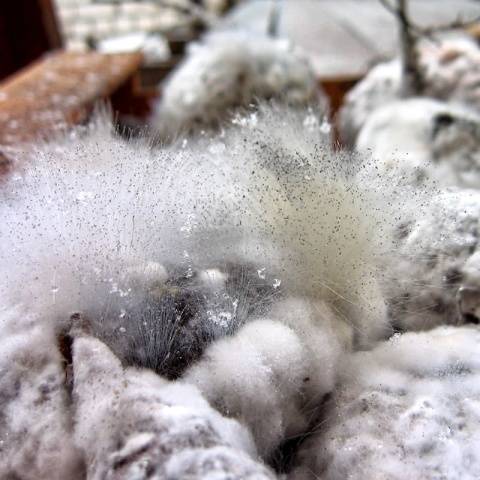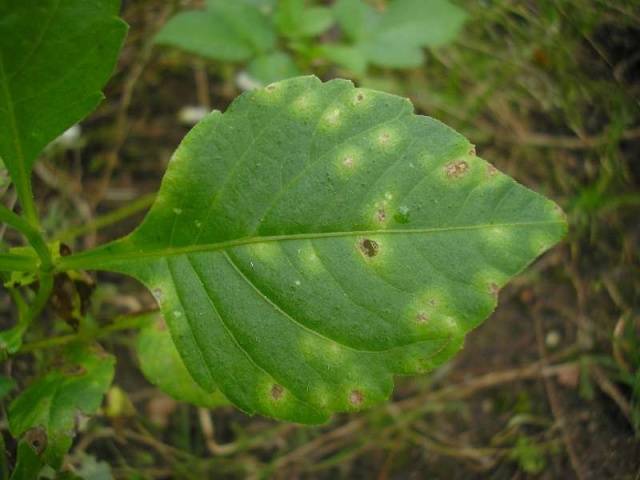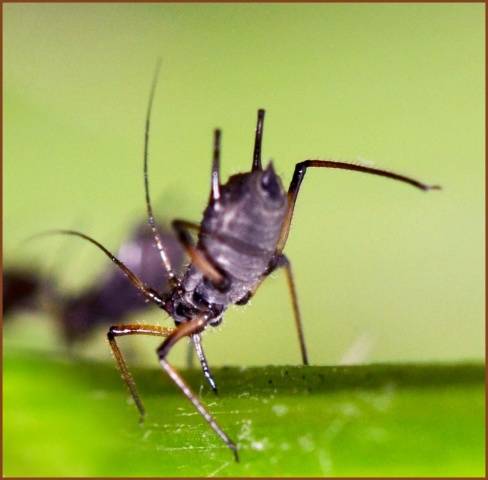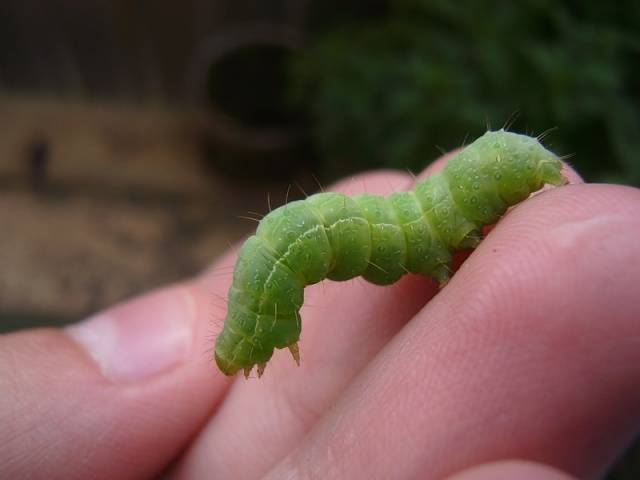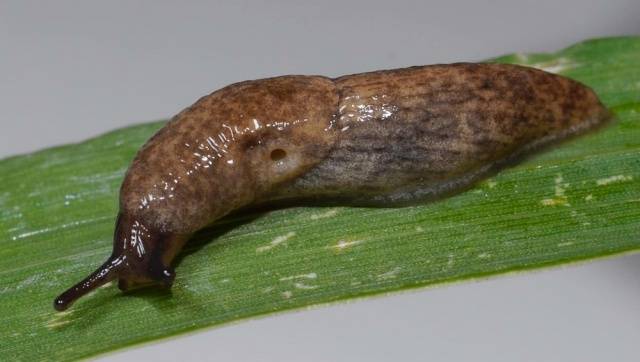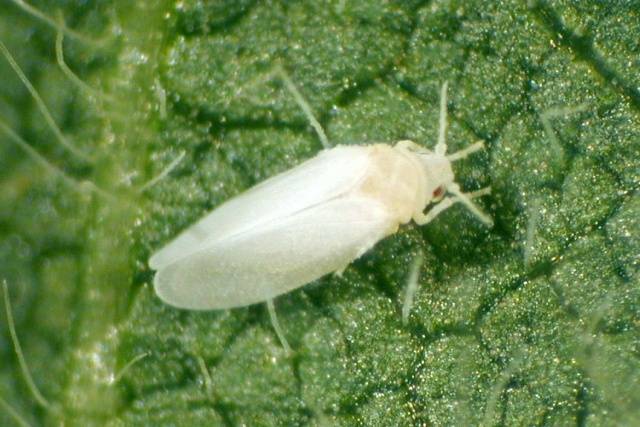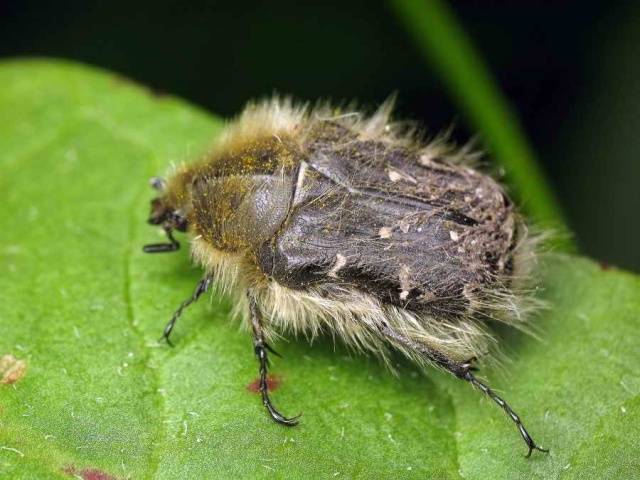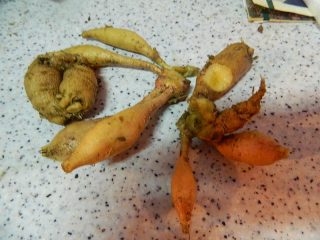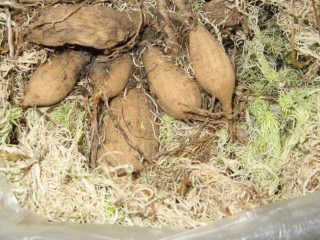Content
The ancient Aztecs and Mayans decorated temples of the sun god with dahlias and used these flowers for their pagan religious rites. They originally named dahlias acoctyls. The flowers known to us today were named in 1803. Today, it is customary to decorate household plots with dahlias. Many growers are fond of their reproduction. And this is not surprising, because these plants bloom very beautifully. However, like all flowers, dahlias need grooming. Most of all, flower growers are annoyed by pests of dahlias.
In this article, you will find out which pests are most often destroyed by dahlias. In addition, we will tell you about what diseases of dahlias exist and how to deal with them. Also, the article will provide a video on the topic that will expand your knowledge of this topic.
Preventive treatment of tubers
Tubers should be treated with fungicides or sulfur. You can powder the tips of the tubers with the preparation or dilute it in water and dip the roots in the solution. If you purchased liquid fungicides, then hold the dahlia tubers in the preparation for about 15 minutes. All work with chemicals must be carried out with rubber gloves. After processing, the tubers must be dried. This can be done by placing the tubers on a newspaper, cardboard or wooden base.
Do not dry tubers on concrete. The fact is that it draws out moisture, as a result of which the dahlia tubers wrinkle prematurely. If you have several varieties of plants, then you can prepare several containers of solution. Each container will contain 1 grade, which means that there will be no confusion. Some growers make a treatment solution from a fungicide and a systemic insecticide.
It is worth noting that in many ways the need for preventive treatment depends on the climate in which the dahlias will be planted. So, in a humid climate, the likelihood of fungal diseases increases, while in a dry climate this practically does not happen.
Varieties of diseases
Dahlias are susceptible to various diseases, most often they are fungal diseases. They develop in humid climates and provided that the grower has planted flowers very densely. Further, the most common of them will be described, as well as advice on how to deal with diseases and their consequences will be given.
Leaf spot
The fungus Entyloma dahliae is considered to be the causative agent of dahlia leaf spot. Yellow-green spots on the leaves are a symptom of the disease. Subsequently, they blur and become gray-brown with a pronounced border. Poor ventilation between dahlia bushes due to densely planted plants leads to leaf spot.
To cure this disease of dahlias, fungicides are used. It could be Oxyhom or Fundazol... Healthy dahlia bushes are treated with these drugs, and diseased plants are destroyed.
Gray rot
The causative agent of gray rot, or, as it is also called, Botrytis, is the pathogenic fungus Botrytis cinerea.The first sign of the disease is the appearance of brown spots on the leaves, and then the whole plant is affected. Gray rot leads to drying of leaves, drying of buds and deformation of peduncles.
If botrytis infects dahlias during the flowering period, then water spots appear on the inflorescences, as a result of which the tissues soften and the flowers rot. The disease develops due to excess moisture, which is the result of a thickened planting.
In the fight against the disease, fungicides are used in the same way as in the previous case. It can be Topsin, Fundazol, Benleit or Rovral.
Verticillium and furious wilting
The symptoms of these diseases are the same, although the causative agents of the diseases are different - Verticillium dahliae and Fusarium oxysporum. First of all, roots and tubers are affected, they simply rot. After that, the leaves and apices of buds and shoots wither. The affected dahlia is covered with a pinkish (fusarium) or brown (verticillosis) bloom.
The cause of the disease is the same as in previous cases - a violation of ventilation and the presence of excess moisture due to a thickened planting. Affected tubers should be removed from the flower bed and burned. As a prophylaxis and treatment, plants should be treated with systemic fungicides. For example, Oxyhom or Fundazol.
Brown rot
The causative agent of this fungal disease of dahlias is the mushroom Rhizoctonia solani. As a rule, young shoots and dahlias at the beginning of the growing season are affected by brown rot.
The disease develops as a result of too deep planting of tubers. Fungicides are used as prophylactic and therapeutic agents. It can be Fundazol, Alirin, Fitosporin-M and Gamair.
Incurable diseases
There are several diseases of dahlias that do not respond to treatment:
- Mosaic virus... Pale green or yellowish stripes appear on the leaves of plants. If you find these symptoms on one of the bushes, then it must be urgently dug up and burned. Such an event will protect other bushes and minimize the possibility of infection.
- Tuberous galls... Nodular warts appear on the root collar. The affected tuber should be dug up as soon as possible. Alternatively, try saving the tubers at the end of the season by cutting off the affected areas. After that, the cut points are treated with fungicides. However, as practice shows, it is better to destroy such tubers and not use the infected soil area for a year.
- Fusarium... Outwardly manifests itself as brown spots appearing on the stems. This leads to wilting and death of dahlias. Sick shoots need to be cut off, and then burned. The remaining bushes need to be treated, for example, with Bordeaux liquid (0.1%) or foundation (0.1%).
- Mycosis... It manifests itself as a usual lack of water - the dahlia turns yellow, and the shoots wither. So, you need to water the beds first and watch the bushes. If after 24 hours the leaves recover, then this is a lack of water, and if not, then mycosis. The disease is not cured, and the affected bush is dug up and burned. In the next 4 years, nothing can be planted on the contaminated land.
Pests and the fight against them
There are many types of pests that dahlias love to infest. Next, we will look at the main types and methods of dealing with them.
Aphids or Aphididae
Colonies of these pests are immediately visible to human eyes. A sign of their appearance on dahlias is the yellowing and curliness of the leaves, the presence of sticky secretions on them. These are sucking pests that are also carriers of viral and fungal diseases.
If single colonies are found on dahlias, then they just need to be cut off with leaves. If there are a lot of aphids, then dahlias need to be processed.This can be done with a solution of Green soap or insecticides, for example, Aktara, Fitoverm, Confidor and Decis.
Chrysanthemum and strawberry nematodes
These pests damage dahlia leaves, petioles, and buds. At first, light, darkening necrotic spots appear on the leaves. Nematodes can overwinter in the buds of dahlia tubers. Root pests of this species are sometimes found. A sign of their presence is the lag of the bush in growth and the subsequent curvature of the stems.
Dahlias with nematodes must be dug up along with a large piece of earth and burned. After that, on the ground where the infected dahlias were planted, it is no longer possible to plant plants that are susceptible to the harmful effects of these pests. As a preventive measure, you can water the soil with Ecogel, which strengthens the cell walls of dahlias. Also, marigolds scare off the pest, so you can plant them near dahlias and other plants susceptible to this pest.
Plant bugs
They feed on the leaf plates of dahlias, as a result of which the flow of nutrients is disrupted. Yellow brown spots appear on damaged leaves. Later, the leaf tissue wrinkles and tears.
If the presence of plant bugs on dahlias is detected in time, then it will be enough to treat the dahlias with a solution of Green Soap. With a massive defeat of dahlias by bedbugs, more powerful means are needed, such as Iskra-M or Mospilan. In the morning, the bugs are practically motionless, so the processing of plants should be carried out at this time of the day.
Scoop-gamma
The moths of this pest fly in late spring and early summer. They feed on nectar and do no harm to dahlias. However, these butterflies lay many eggs, from which caterpillars hatch, gnawing at the roots of the dahlia at the surface of the earth, as a result of which the plant withers.
If the tracks are few, then they can be assembled by hand. But in case of a massive invasion, you will need to use agents such as Bitoxibacillin and Lepidocide. Insecticides - Fufanon and Iskra-M will also help in the fight against caterpillars. All of the above drugs need to process dahlias and their land.
Gastropods or slugs
They appear in the shade, predominantly in wet weather, and are especially energetic at night. They eat out the grooves in the leaves and gnaw them right through. Leaves are often eaten completely.
In the aisles, you can scatter ash, which irritates the mollusks, it is like glass to humans for them. However, this technique is ineffective, since after getting wet, the ash is no longer dangerous for slugs. Also, ordinary ground red pepper and superphosphate are used to destroy them. Metaldehyde preparations kill slugs. They are also scattered on the ground. You can also set slug traps and collect them by hand.
Greenhouse whitefly
Small butterflies as small as 0.1 cm are sometimes found on dahlias planted outdoors. They usually infect flowers in greenhouses. Eggs are laid on the underside of the dahlia leaf. They hide under the leaves of dahlias. The larvae feed on the leaves, as a result of which spots appear on them. Greenhouse whitefly cocoons also form on leaves. It turns out that the foliage of dahlias serves as this insect home.
In the fight against the pest, insecticides are used, such as Iskoriy, Aktara and Mospilan. They are applied to the plant by spraying.
Deer or furry bronze
The deer is a black beetle, over 1 cm in size. It eats away the pistils, stamens and petals of dahlias. It affects flowers from late spring to late summer. The female beetle lays its eggs in humus-rich soil, where brown-headed white larvae hatch, which feed on dahlia roots and plant debris.
Usually there are not so many beetles, so they are simply collected from dahlias, and the larvae are removed in the process of loosening the soil.
Let's summarize
So, with a competent approach to the issue of caring for dahlias, problems with them will not arise.Well, if you really did something wrong, then you can always use the tips outlined in the article. In addition, we suggest you watch additional videos:
